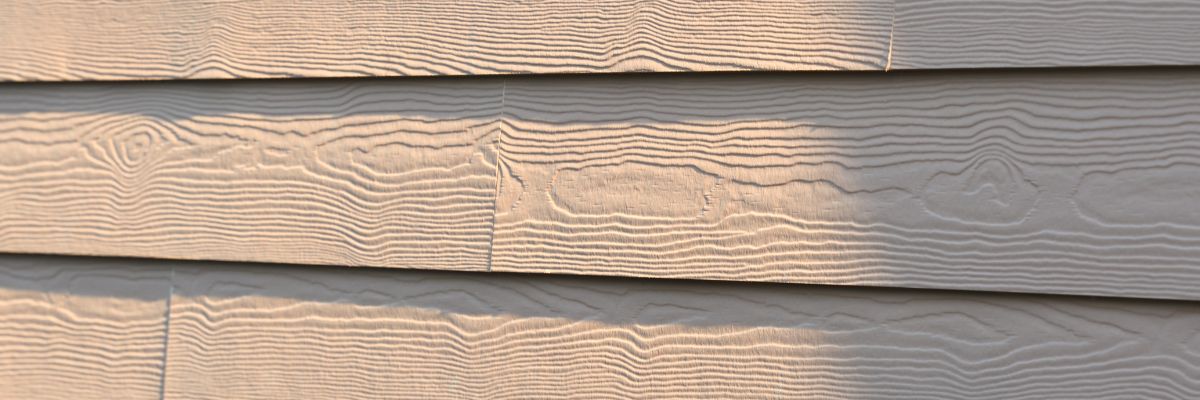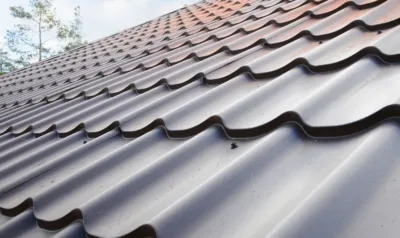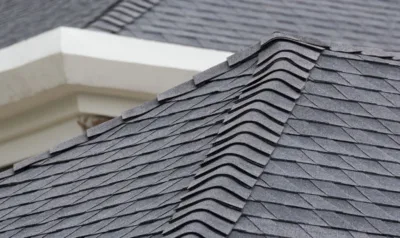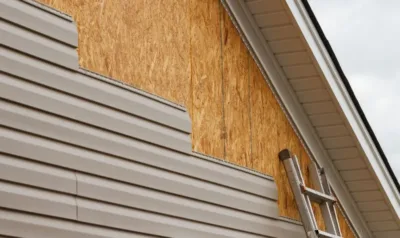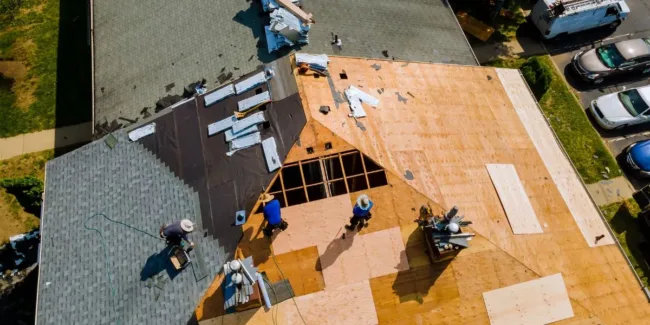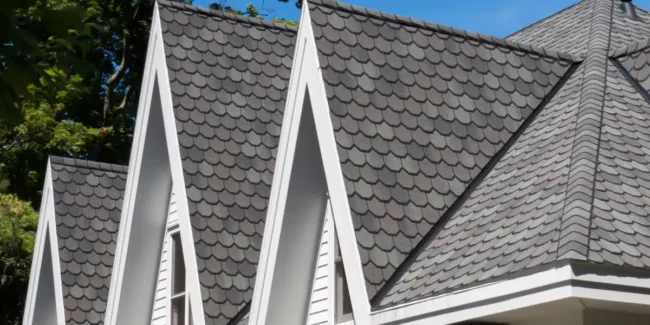Is Fiber Cement Siding Waterproof?
The answer is no, fiber cement siding is not completely waterproof—but it is highly water-resistant. Its unique composition makes it far superior to wood and many other materials when it comes to withstanding moisture, but proper installation and sealing are critical to ensure optimal performance.
What Is Fiber Cement Siding Made Of?
To understand how well fiber cement siding handles moisture, it helps to know what it’s made of. Fiber cement siding consists primarily of Portland cement, silica sand, cellulose fibers (wood pulp), and water. These ingredients are combined to form a dense, strong board that resists many common threats to exterior cladding, including fire, pests, and extreme weather.
The Portland cement provides structural strength and fire resistance. Silica sand adds hardness and stability. Cellulose fibers give the boards some flexibility and help resist cracking. Water is used to bind and cure the mixture. This composite formula results in a product that is naturally more moisture-tolerant than materials like wood or engineered wood siding.
Is Fiber Cement Siding Waterproof?
Although fiber cement siding is highly resistant to water damage, it is not considered fully waterproof. The siding itself can shed water effectively, and it won’t rot, warp, or swell like wood when exposed to humidity or rain. However, fiber cement can absorb small amounts of water, especially at vulnerable points such as cut edges, seams, and unsealed joints.
In a properly installed system, the siding acts as a first line of defense, but the wall assembly behind it plays a crucial supporting role. That’s why manufacturers and builders recommend installing a weather-resistant barrier (WRB) beneath the fiber cement panels. This additional layer helps protect the structure from any water that manages to get behind the siding, particularly during wind-driven rain or snow events.
The Role of Proper Installation
The performance of fiber cement siding heavily depends on how well it is installed. While the boards themselves are water-resistant, poor installation can compromise their effectiveness and allow water to infiltrate the building envelope.
Several best practices are essential for maximizing moisture resistance:
Seal all cut edges. When fiber cement boards are trimmed on site, the exposed ends must be sealed with paint, caulk, or manufacturer-approved sealants. Unsealed cuts are one of the most common sources of water intrusion, as the interior material is more porous than the factory-finished surfaces.
Use proper flashing and WRB. Flashing should be installed around windows, doors, corners, and horizontal transitions to prevent water from entering through these vulnerable areas. A weather-resistant barrier beneath the siding acts as a second defense against water infiltration.
Leave proper clearances. Fiber cement siding should not be installed directly against roofing, decking, or the ground. Leaving appropriate gaps helps prevent prolonged contact with standing water or accumulated snow, which could increase the risk of moisture absorption over time.
Allow for drainage. Most fiber cement siding systems are installed in a horizontal lap configuration, where the overlapping boards naturally shed water using gravity. However, adding a small drainage gap or rain screen behind the siding can further enhance airflow and moisture evaporation.
Use factory-applied finishes. Many fiber cement products come with pre-finished coatings that include UV protection and water repellency. These finishes add another layer of defense and help extend the life of the siding.
Fiber Cement vs. Other Siding Materials
Compared to traditional wood siding, fiber cement is far more water-resistant. Wood is a porous material that absorbs water readily, leading to rot, warping, insect infestations, and paint failure over time. Even engineered wood siding products are prone to swelling and deterioration if moisture finds its way in.
Vinyl siding, often touted as a water-resistant solution, is itself impervious to water but does not form a watertight barrier. In fact, water can easily get behind vinyl panels during heavy rain or strong winds. If a house wrap or moisture barrier is missing or improperly installed behind the vinyl, trapped moisture can cause damage to the underlying structure.
Stucco and brick veneer offer different levels of moisture protection depending on how they’re applied and maintained. However, both systems also rely heavily on the layers beneath them to manage water flow and drainage.
In contrast, fiber cement siding offers a compelling balance of durability, moisture resistance, and aesthetic appeal. It doesn’t rot like wood, it won’t melt like vinyl, and it holds up exceptionally well under challenging weather conditions. With proper care and professional installation, fiber cement can outperform many other siding materials in wet or coastal environments.
What Happens If Fiber Cement Absorbs Water?
In most cases, fiber cement siding will not suffer significant damage from brief moisture exposure, even during heavy storms. The material is designed to handle fluctuations in humidity and temperature. However, problems can arise if the boards are routinely exposed to standing water or improperly sealed edges allow water to seep in repeatedly.
If moisture does get absorbed into cut edges or through improperly flashed seams, it can lead to surface discoloration, premature deterioration, or even delamination in rare cases. These issues are preventable with careful installation, proper maintenance, and periodic inspections of high-risk areas.
How to Maximize Moisture Resistance
To ensure your fiber cement siding resists water as effectively as possible, follow these simple guidelines:
Hire a certified installer. Professional installation ensures proper flashing, sealing, and clearance practices that help prevent water intrusion.
Seal every cut edge. Any edge that’s cut in the field must be immediately sealed with paint or a compatible sealant to maintain the board’s water resistance.
Keep gutters and downspouts clear. Direct water away from your siding by maintaining functional drainage systems around your home.
Inspect annually. Look for signs of water staining, caulk failure, or paint degradation, and address them quickly to prevent long-term damage.
Choose factory-finished products. Products with baked-on color and protective coatings will resist UV fading and repel moisture more effectively than unfinished siding.
Final Verdict: Water-Resistant, Not Waterproof
Fiber cement siding is not fully waterproof in the way metal or solid plastic panels are, but it is extremely water-resistant and well-suited to wet climates. It will not rot, warp, or swell under normal weather conditions and performs exceptionally well when installed with best practices and backed by a solid moisture management system.
Its resilience, long life span, and low maintenance make it a strong contender for homeowners who want the look of wood or masonry without the risk of water damage. And with proper care, fiber cement siding can remain beautiful and structurally sound for decades.
Considering Fiber Cement for Your Home?
If you’re thinking about installing fiber cement siding or upgrading your home’s exterior, proper installation is the key to long-term success. At Home Genius Exteriors, we specialize in premium siding solutions designed to protect your home from the harshest conditions while boosting curb appeal.
Contact Home Genius Exteriors today for a free consultation and learn how fiber cement siding can offer your home superior moisture resistance, beauty, and durability that lasts.
